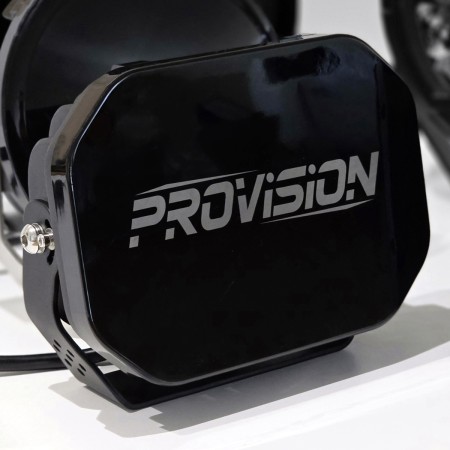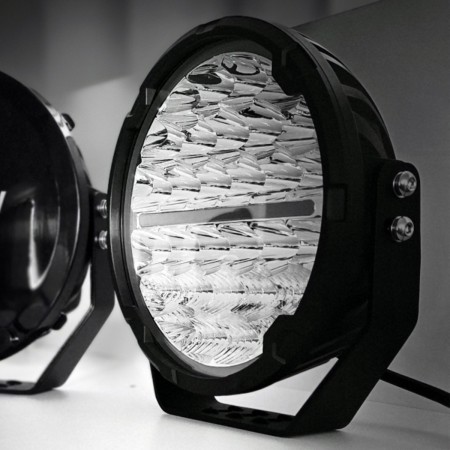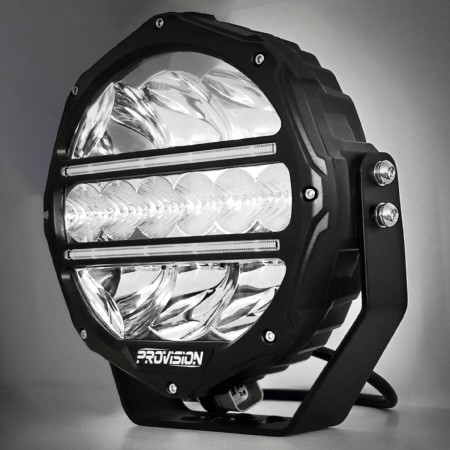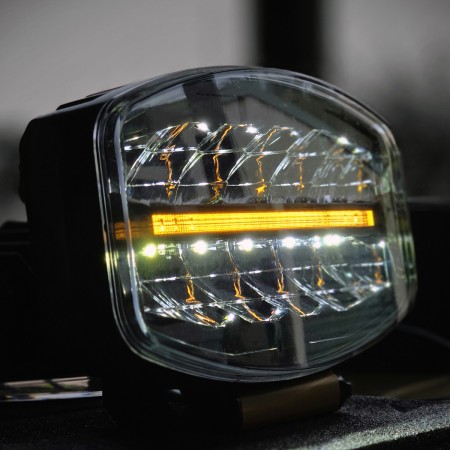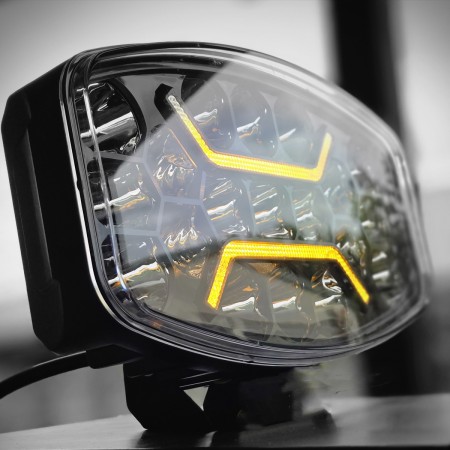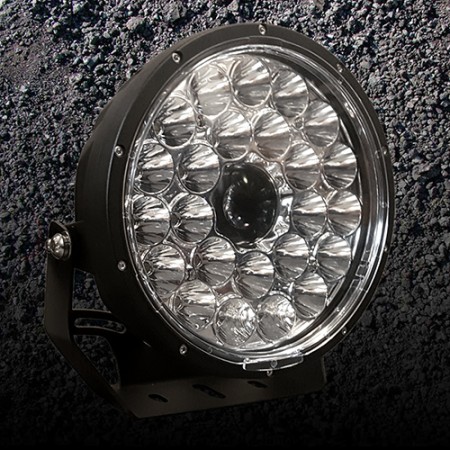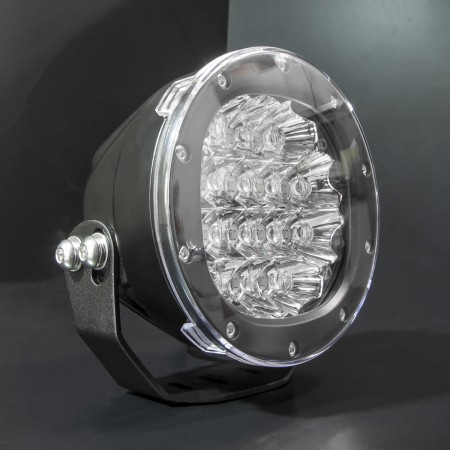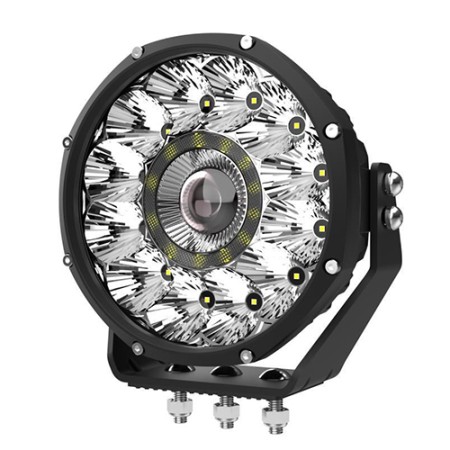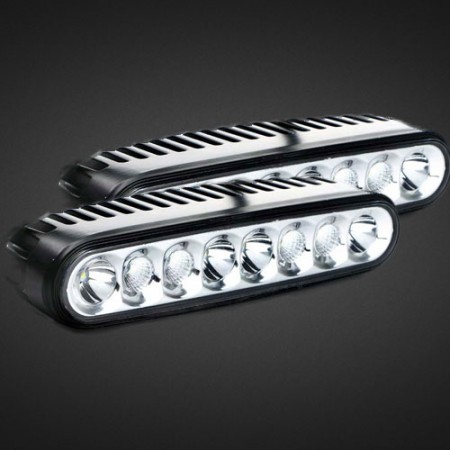LED Driving Lights
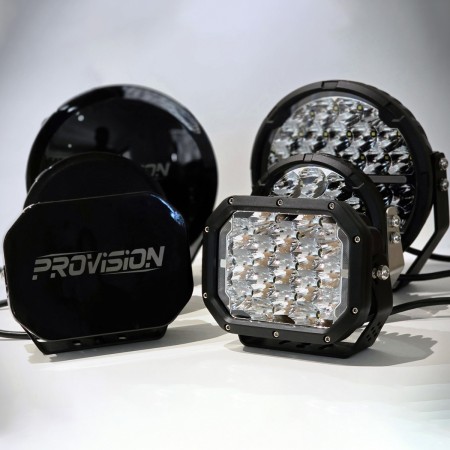
When purchasing small LED driving lights, several key factors need to be considered to ensure you make an informed choice. This includes, how much light they actually produce, and whether you should go for a bigger 9" light. Most people get the more compact lights if they can't fit 9 inch on, or the 9 inch look too big on the bar. Other considerations for led driving lights are power limitations, beam type, weight capacity, and budget. This guide will help you navigate these aspects effectively.
Why Choose LED Driving Lights Over HID or Halogen?
LED driving lights offer numerous advantages over halogen and HID lights. They last significantly longer—up to 1000 times longer than halogen bulbs—and provide a brighter, whiter light for better vision clarity. Unlike halogen bulbs, which have fragile filaments that can break on rough roads, LED lights are robust and filament-free. LEDs also require less maintenance compared to HID lights, which need regular bulb or ballast replacements. LED driving lights can last between 30,000 to 50,000 hours, with some models reaching up to 100,000 hours.
Choosing the Right Size
To determine the correct size for your small LED driving lights, measure the space between your vehicle's grill and the mounting bolt. Ensure there is enough room for the lights you intend to purchase. Modifications or custom mounting brackets can help accommodate larger lights if needed. Always consider the shape and height of the lights in relation to the curvature of your mounting bar.
Beam Patterns
Selecting the appropriate beam pettern for your LED driving lights depends on your driving needs. Lights with a 15-30-degree beam angle is suitable for general driving. For example, our GEN5 6.5-inch small LED Driving Lights have a beam angle of around 20-25 degrees and use 5W Osram LED's, and we have three versions of our 9-inch. The GEN5 9-inch LED Driving Lights have a beam angle of around 10-15 degrees for maximum distance, and our GEN6 9 Inch LED driving Lights use 10W Osram and have a beam angle of around 30 degrees for maximum area of light. Our 9" 370W light uses 10W Cree LED's and offers maximum distance with exceptional performance. Remember, higher power does not always mean better performance; the application and beam pattern matter significantly.
Current Draw and Power Consumption
Most vehicles can handle powerful LED driving lights. For high-power lights like the 370W models, it's advisable to have an auto electrician assess your vehicle's wiring, relay, and switch ratings to ensure compatibility. Despite a light's high wattage rating, actual current draw is often lower due to efficient thermal management, with a 370W light typically drawing around 20-25 amps.
Shape and Design
LED driving lights come in round, square, and rectangular shapes. Round lights usually produce a round beam, while square and rectangular lights offer broader beams. The choice of shape can also affect vehicle aesthetics and airflow to the radiator, with rectangular lights often providing a lower profile.
Waterproof and Dustproof Ratings
For durability, choose LED driving lights with at least an IP67 rating, which ensures protection against water submersion and dust ingress. This is crucial for off-road driving and harsh weather conditions. For more information on ingress ratings, click here.
Relays and Switches
For powerful LED lights, a 40amp or 50amp relay is recommended. Ensure the relay and wiring can handle the current draw of your lights. Choose a suitable rocker or toggle switch that fits your vehicle's accessory socket and can handle the current load.
Buying Quality on a Budget
While many LED driving lights look similar, their quality can vary. Opt for reputable brands or suppliers with a proven track record. Purchasing from an established company like Pro-Vision Lighting & Electrical ensures you receive high-quality products with reliable performance.
Vehicle Compatibility
LED driving lights are available for various vehicle types, from small SUVs and trucks to motorcycles and boats. Ensure the lights you choose are compatible with your vehicle's mounting options and power requirements.
Specialized Applications
For trucks, boats, and industrial vehicles, select lights with robust construction, high ingress protection, and vibration resistance. For marine use, ensure the lights have corrosion-resistant coatings and stainless-steel fasteners. Learn more about the benefits of different lens types.
Conclusion
Switching to LED driving lights provides enhanced visibility, durability, and efficiency. By considering factors like size, power, beam type, and quality, you can select the best lights for your vehicle, ensuring a safer and more enjoyable driving experience. For further assistance, feel free to contact Pro Vision Lighting in Australia today on 1300 775 359.
 Login
Login Register
Register


